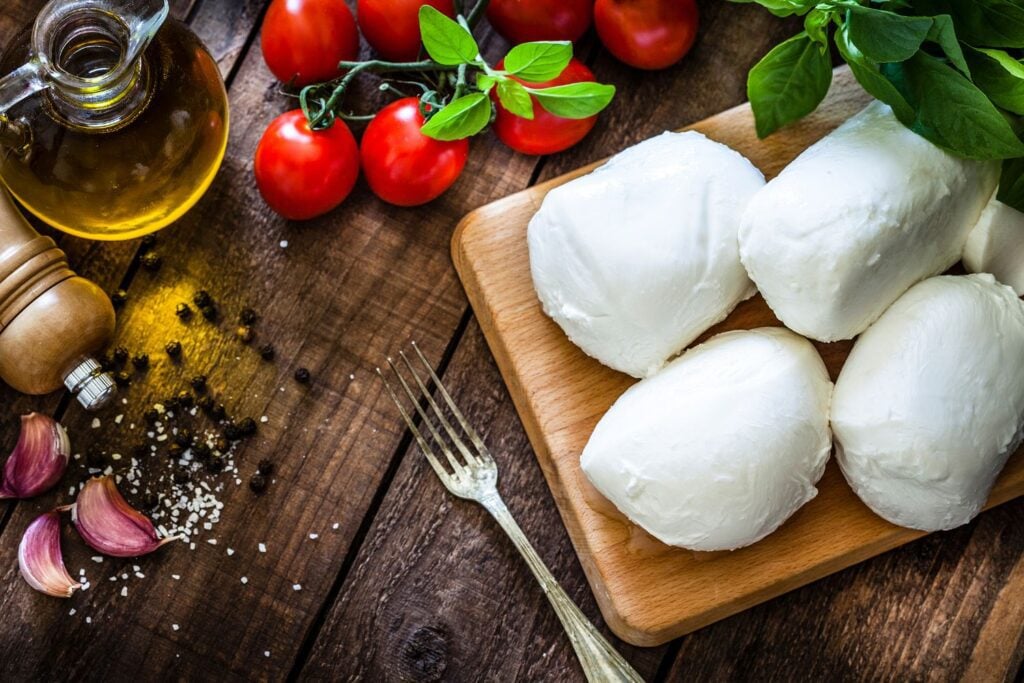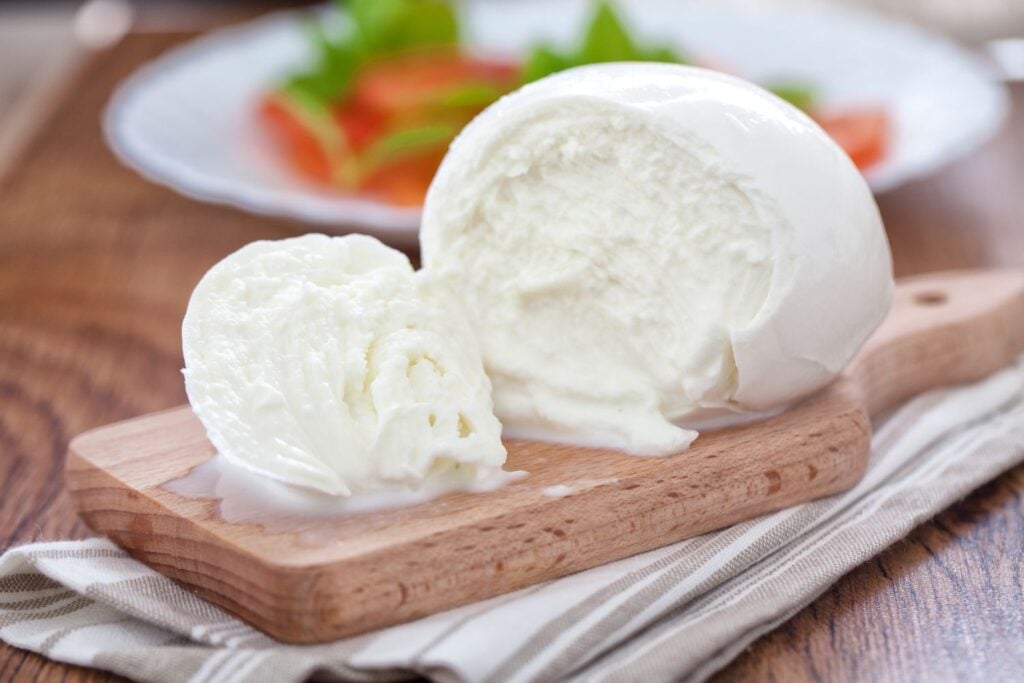Burrata cheese has been gaining popularity in recent years, and for good reason. This Italian cheese is renowned for its rich, creamy texture and fresh flavor. Unlike many other curd cheeses, burrata offers a unique sensory experience with its contrasting textures and delicate taste. In this article, we’ll explore what makes burrata, often called the queen of Italian cheese, so special and how you can use it to enhance your dishes.

What is Burrata Cheese?
Burrata cheese is an artisanal cheese that hails from the Puglia region of southern Italy. It is a type of fresh cheese that belongs to the pasta filata (stretched curd) family. Often made with cow's milk, it can also be crafted with water buffalo milk, resulting in mozzarella di bufala. The word “burrata” translates to “buttered” in Italian, reflecting the cheese’s luxurious, buttery flavor and buttery consistency.
Burrata is crafted from mozzarella and cream. The cheese consists of a solid outer shell of fresh mozzarella curd, which is filled with a lush mixture of cheese curds known as stracciatella filling and whole cream. This results in a cheese that combines the firm texture of mozzarella with a soft, spreadable creamy interior.
Origin and History
Burrata cheese was first made in the 1920s in Puglia by Italian cheesemakers like Lorenzo Bianchino. It was originally created as a way to use up leftover mozzarella scraps and fresh curds. Today, burrata is celebrated worldwide for its creamy texture and versatile use in both savory and sweet dishes. Next time you visit the grocery store, look for a ball of burrata to elevate your next meal.

Comparison to Other Cheeses
While burrata is often compared to mozzarella, it differs significantly in texture and taste. Mozzarella is firmer and less creamy, whereas burrata has a rich, gooey interior. Burrata’s unique texture comes from its combination of mozzarella and fresh cream, making it a luxurious addition to many recipes. It stands apart from other types of cheese, offering a high-fat cheese option with a soft center that melts in the mouth.
The Anatomy of Burrata
To truly appreciate burrata, it’s helpful to understand its structure.
Outer Shell: The exterior of burrata is made from mozzarella. It is relatively firm and provides a protective layer for the creamy center. The mozzarella shell is delicate and can be pierced easily, revealing the rich filling inside.
Creamy Filling: Inside the mozzarella shell is a mixture of cream and stracciatella. Stracciatella is made from shredded mozzarella mixed with heavy cream, creating a soft, spreadable texture. This filling is what gives burrata its signature gooey consistency.

Burrata Production Process
Burrata cheese is made through a delicate process that combines mozzarella and cream, resulting in a rich, creamy texture. Here’s a step-by-step overview of how it’s traditionally crafted:
- Curd Formation
Fresh milk is heated and mixed with citric acid and microbial rennet, causing the milk to coagulate and form curds.
The curds are cut into small pieces, allowing the whey to separate. - Stretching the Mozzarella
The curds are drained and heated in hot whey until they become elastic and pliable.
The curds are then stretched and kneaded with a wooden spoon to form smooth mozzarella. - Creating the Burrata Shell
A portion of the mozzarella is shaped into a thin, flat sheet, which will serve as the outer shell. - Filling with Stracciatella
The remaining mozzarella curds are shredded and mixed with whole cream, creating a rich, soft filling known as stracciatella.
This mixture is carefully spooned into the mozzarella sheet. - Sealing the Burrata
The filled mozzarella sheet is gathered at the top and twisted, sealing the creamy filling inside.
The ball is briefly immersed in cold salted water to firm up the shape. - Finishing
The burrata is often placed in brine or wrapped in plastic wrap to enhance flavor and preserve freshness.

How to Store Burrata Cheese
Burrata cheese is highly perishable, so proper storage is crucial to maintaining its freshness.
- Refrigeration: Store burrata in the refrigerator as soon as you bring it home. It should be kept in its original packaging or a small container to prevent it from drying out.
- Shelf Life: Burrata is best used within 2-3 days of purchase. Check the expiration date and consume it promptly for optimal flavor.
- Signs of Spoilage: If burrata develops an off smell, mold, or a slimy texture, it should be discarded. Fresh burrata should have a pleasant, slightly milky aroma and creamy texture.
Cooking with Burrata Cheese
Burrata cheese is incredibly versatile and can be used in a variety of dishes. Here are some ideas to get you started:
Pairing Burrata Cheese
Burrata pairs well with a range of ingredients. Here are some classic and creative pairings:
- Fresh Tomatoes: The acidity of tomatoes complements the creaminess of burrata. Try it with heirloom tomatoes, cherry tomatoes, or in a burrata caprese salad.
- Herbs: Fresh basil, parsley, or chives enhance the cheese’s flavor.
- Fruits: Summer fruits like peaches, figs, or strawberries contrast burrata’s richness.
- Savory Items: Prosciutto, roasted vegetables, or olives add depth and balance.

Recipes and Cooking Methods
- Burrata on Toast or Pizza: Top crusty bread or burrata pizza with olive oil and burrata.
- Salads: Pair burrata with arugula, cherry tomatoes, and balsamic reduction.
- Charcuterie Boards: Add burrata to a charcuterie board or grazing table with prosciutto and fruits.
- Baking and Grilling: Use in baked pasta or a grilled cheese sandwich.
Conclusion
Burrata cheese is a versatile and indulgent ingredient that can transform a simple dish into something extraordinary. Its creamy texture and rich flavor make it a favorite among cheese lovers and Wisconsin cheesemakers. Whether you’re enjoying it fresh or cooked, burrata adds a touch of luxury to your meals.


Leave a Reply